funûˋraire
« Le papyrus-Amulette de Lyon Musûˋe des Beaux-Arts H 2425 »
ENiM 6, 2013, p. 159-168.
 ûdition du papyrus de Lyon Musûˋe des Beaux-Arts H 2425, document datant de lãûˋpoque ptolûˋmaû₤que rûˋdigûˋ en hiûˋratique avec la formule 100 du Livre des morts accompagnûˋe de son illustration. Lãûˋtude de ce manuscrit donne lãoccasion de revenir sur la fonction et lãutilisation de cette catûˋgorie dãobjets en contexte funûˋraire.
ûdition du papyrus de Lyon Musûˋe des Beaux-Arts H 2425, document datant de lãûˋpoque ptolûˋmaû₤que rûˋdigûˋ en hiûˋratique avec la formule 100 du Livre des morts accompagnûˋe de son illustration. Lãûˋtude de ce manuscrit donne lãoccasion de revenir sur la fonction et lãutilisation de cette catûˋgorie dãobjets en contexte funûˋraire.
 Edition of the papyrus Lyon Musûˋe des Beaux-Arts H 2425, which can be dated to the Ptolemaic period. It is written in hieratic and contains the Spell 100 of the Book of the Dead with her illustration. The study of this manuscript allows us to reconsider the function and use of this category of objects in funerary context.
Edition of the papyrus Lyon Musûˋe des Beaux-Arts H 2425, which can be dated to the Ptolemaic period. It is written in hieratic and contains the Spell 100 of the Book of the Dead with her illustration. The study of this manuscript allows us to reconsider the function and use of this category of objects in funerary context.
 Consulter cet article (53172) -
Consulter cet article (53172) -  Télécharger cet article au format pdf (28261)
Télécharger cet article au format pdf (28261)
« û propos dãun titre spûˋcifique dãaprû´s la documentation saû₤te dãOxyrhynchos »
ENiM 8, 2015, p. 1-9.
 Identification du titre jmy-nww transmis par la documentation ûˋcrite issue des fouilles dãel-Bahnasa / Oxyrhynchos.
Identification du titre jmy-nww transmis par la documentation ûˋcrite issue des fouilles dãel-Bahnasa / Oxyrhynchos.
 Identification of the title jmy-nww transmitted by the written sources from excavations in el-Bahnasa / Oxyrhynchus.
Identification of the title jmy-nww transmitted by the written sources from excavations in el-Bahnasa / Oxyrhynchus.
 Consulter cet article (54689) -
Consulter cet article (54689) -  Télécharger cet article au format pdf (28139)
Télécharger cet article au format pdf (28139)
« Reconstitution dãun hypocûˋphale »
ENiM 11, 2018, p. 183-195.
 En dûˋcouvrant le grand fragment dãun hypocûˋphale dãune collection privûˋe, nous avons immûˋdiatement eu envie de le reconstituer û la lumiû´re du corpus dûˋjû ûˋtabliô : aventure passionnante pour retrouver lãintûˋgritûˋ de lãobjet et lui redonner tout son rayonnement etãÎ ses pouvoirs magiquesô !
En dûˋcouvrant le grand fragment dãun hypocûˋphale dãune collection privûˋe, nous avons immûˋdiatement eu envie de le reconstituer û la lumiû´re du corpus dûˋjû ûˋtabliô : aventure passionnante pour retrouver lãintûˋgritûˋ de lãobjet et lui redonner tout son rayonnement etãÎ ses pouvoirs magiquesô !
 Discovering a large fragment of a hypocephalus in a private collection, we immediately began to reconstitute it according to the so far existent corpusô : an exciting undertaking to rebuild the complete object to its lustre and its magical powers.
Discovering a large fragment of a hypocephalus in a private collection, we immediately began to reconstitute it according to the so far existent corpusô : an exciting undertaking to rebuild the complete object to its lustre and its magical powers.
 Consulter cet article (43752) -
Consulter cet article (43752) -  Télécharger cet article au format pdf (23334)
Télécharger cet article au format pdf (23334)
« La voû£te en briques crues dans le contexte funûˋraire nubien »
ENiM 13, 2020, p. 275-283.
 La voû£te dite ô¨ nubienne ô£ : une structure architecturale que lãon retrouve dû´s les premiû´res dynasties ûˋgyptiennes. En Nubie ce type de construction est essentiellement rûˋalisûˋ en briques crues et il semble que les reprûˋsentants du Groupe C (2400-1450 avant notre û´re) en Basse-Nubie se soient familiarisûˋs avec la maûÏonnerie en briques crues au dûˋbut du Moyen Empire. En parallû´le en Haute Nubie, la nûˋcropole de Kerma (2450-1500 avant notre û´re) comporte de nombreuses constructions voû£tûˋes en briques crues. Alors quãen ûgypte lãarchitecture voû£tûˋe en briques crues se dûˋveloppe en contexte funûˋraire, en Nubie elle est utilisûˋe dans le domaine funûˋraire, cultuel mais aussi civil. Cet article retrace lãapparition et le dûˋveloppement de la voû£te nubienne sur le territoire nubien dans le domaine funûˋraire.
La voû£te dite ô¨ nubienne ô£ : une structure architecturale que lãon retrouve dû´s les premiû´res dynasties ûˋgyptiennes. En Nubie ce type de construction est essentiellement rûˋalisûˋ en briques crues et il semble que les reprûˋsentants du Groupe C (2400-1450 avant notre û´re) en Basse-Nubie se soient familiarisûˋs avec la maûÏonnerie en briques crues au dûˋbut du Moyen Empire. En parallû´le en Haute Nubie, la nûˋcropole de Kerma (2450-1500 avant notre û´re) comporte de nombreuses constructions voû£tûˋes en briques crues. Alors quãen ûgypte lãarchitecture voû£tûˋe en briques crues se dûˋveloppe en contexte funûˋraire, en Nubie elle est utilisûˋe dans le domaine funûˋraire, cultuel mais aussi civil. Cet article retrace lãapparition et le dûˋveloppement de la voû£te nubienne sur le territoire nubien dans le domaine funûˋraire.
 The so-called ãNubian vaultã: an architectural structure that can be found since the firth Egyptian dynasties. In Nubia this type of construction is mainly made in mud bricks and it seems that population of the C-Groupe (2400-1450 BC) in Lower Nubia became familiar with mud brick architecture at the beginning of the Middle Kingdom. In the same time, in Upper Nubia, the Kerma necropolis (2450-1500 BC) have numerus vaulted building in mud bricks. While in Egypt vaulted mud brick architecture developed in funerary context, in Nubia et was used together in funerary, cult and civilian. This paper traces the appearance and development of the Nubian vault in Nubia in the funeral context.
The so-called ãNubian vaultã: an architectural structure that can be found since the firth Egyptian dynasties. In Nubia this type of construction is mainly made in mud bricks and it seems that population of the C-Groupe (2400-1450 BC) in Lower Nubia became familiar with mud brick architecture at the beginning of the Middle Kingdom. In the same time, in Upper Nubia, the Kerma necropolis (2450-1500 BC) have numerus vaulted building in mud bricks. While in Egypt vaulted mud brick architecture developed in funerary context, in Nubia et was used together in funerary, cult and civilian. This paper traces the appearance and development of the Nubian vault in Nubia in the funeral context.
 Consulter cet article (43154) -
Consulter cet article (43154) -  Télécharger cet article au format pdf (22756)
Télécharger cet article au format pdf (22756)
« Lãhistoire dãáÊm-jwnw et du vilain (petit) canard »
ENiM 14, 2021, p. 1-19.
 Partant de lãûˋtude de la composition des menus de repas funûˋraires û lãAncien Empire, lãarticle prûˋsente une rûˋflexion sur la perception de la classe des Aves dans la catûˋgorisation des crûˋatures du Monde pharaonique. Un dûˋveloppement particulier est consacrûˋ lãOuette dãûgypte en raison de lãintûˋrûˆt que reprûˋsente la rûˋsolution symbolique de cette figure animaliû´re complexe, objet tantûÇt dãapprobation et de rejet selon les contextes culturels. On sãinterroge, pour finir, sur le sens de deux titres portûˋs par des fonctionnaires au Moyen Empire.
Partant de lãûˋtude de la composition des menus de repas funûˋraires û lãAncien Empire, lãarticle prûˋsente une rûˋflexion sur la perception de la classe des Aves dans la catûˋgorisation des crûˋatures du Monde pharaonique. Un dûˋveloppement particulier est consacrûˋ lãOuette dãûgypte en raison de lãintûˋrûˆt que reprûˋsente la rûˋsolution symbolique de cette figure animaliû´re complexe, objet tantûÇt dãapprobation et de rejet selon les contextes culturels. On sãinterroge, pour finir, sur le sens de deux titres portûˋs par des fonctionnaires au Moyen Empire.
 Starting from studying of the composition of funeral meal menus in the Old Kingdom, the article presents a reflection on the perception of the Aves class in the categorization of creatures of the Pharaonic World. A particular development is the Egyptian Goose because of the interest represented by the symbolic resolution of this complex animal figure, which is sometimes approved and rejected according to cultural contexts. Finally, we consider the meaning of two titles of civil servants carried to the Middle Kingdom.
Starting from studying of the composition of funeral meal menus in the Old Kingdom, the article presents a reflection on the perception of the Aves class in the categorization of creatures of the Pharaonic World. A particular development is the Egyptian Goose because of the interest represented by the symbolic resolution of this complex animal figure, which is sometimes approved and rejected according to cultural contexts. Finally, we consider the meaning of two titles of civil servants carried to the Middle Kingdom.
 Consulter cet article (46719) -
Consulter cet article (46719) -  Télécharger cet article au format pdf (21735)
Télécharger cet article au format pdf (21735)
« Disoukhonsou, prûˆtre de Coptos û la 25e dynastie. Considûˋrations techniques et symboliques sur les cercueils bivalves thûˋbains »
ENiM 15, 2022, p. 181-212.
 Le cercueil ûˋgyptien conservûˋ au musûˋe Jacquemart-Andrûˋ appartient û un certain Disoukhonsou, prûˆtre de Coptos û la 25e dynastie. Son ûˋtude et sa restauration ont fourni lãoccasion de le replacer au sein de la production des cercueils bivalves, caractûˋristiques des 25e-26e dynasties. Le cercueil bivalve est conûÏu, techniquement et symboliquement, comme une enveloppe-cocon, û lãinstar de lãenveloppe de cartonnage de lãûˋpoque libyenne quãil remplace progressivement. Il prûˋsente une particularitûˋ technique dûˋrivant des cartonnages : lãapplication dãune toile enveloppante support du dûˋcor, recouvrant toute la surface extûˋrieure, englobant cuve et couvercle en un tout. Il est proposûˋ de considûˋrer lãenveloppement intûˋgral de toile û lãextûˋrieur du cercueil comme lãun des critû´res propres aux cercueils bivalves thûˋbains des 25-26e dynasties. Sãil est possible que la momie ait ûˋtûˋ mise en place avant la rûˋalisation du dûˋcor, une hypothû´se diffûˋrente est ici dûˋfendue, privilûˋgiant un autre enchaûÛnement des ûˋtapes de rûˋalisation : le cercueil ûˋtait entiû´rement rûˋalisûˋ et dûˋcorûˋ, avant dãûˆtre rouvert en dûˋcoupant la toile pour y insûˋrer la momie, puis refermûˋ. Cette re-fermeture matûˋrielle sãaccompagnait probablement dãune rûˋparation symbolique, tout aussi efficiente dans la pensûˋe ûˋgyptienne pour rûˋtablir lãhermûˋticitûˋ recherchûˋe. Lãûˋtude rûˋalisûˋe, principalement sur les cercueils du musûˋe du Louvre, expose les ûˋlûˋments rûˋunis pour ûˋtayer ces hypothû´ses et invite les chercheurs û multiplier lãexamen dãautres cercueils afin de les enrichir et discuter.
Le cercueil ûˋgyptien conservûˋ au musûˋe Jacquemart-Andrûˋ appartient û un certain Disoukhonsou, prûˆtre de Coptos û la 25e dynastie. Son ûˋtude et sa restauration ont fourni lãoccasion de le replacer au sein de la production des cercueils bivalves, caractûˋristiques des 25e-26e dynasties. Le cercueil bivalve est conûÏu, techniquement et symboliquement, comme une enveloppe-cocon, û lãinstar de lãenveloppe de cartonnage de lãûˋpoque libyenne quãil remplace progressivement. Il prûˋsente une particularitûˋ technique dûˋrivant des cartonnages : lãapplication dãune toile enveloppante support du dûˋcor, recouvrant toute la surface extûˋrieure, englobant cuve et couvercle en un tout. Il est proposûˋ de considûˋrer lãenveloppement intûˋgral de toile û lãextûˋrieur du cercueil comme lãun des critû´res propres aux cercueils bivalves thûˋbains des 25-26e dynasties. Sãil est possible que la momie ait ûˋtûˋ mise en place avant la rûˋalisation du dûˋcor, une hypothû´se diffûˋrente est ici dûˋfendue, privilûˋgiant un autre enchaûÛnement des ûˋtapes de rûˋalisation : le cercueil ûˋtait entiû´rement rûˋalisûˋ et dûˋcorûˋ, avant dãûˆtre rouvert en dûˋcoupant la toile pour y insûˋrer la momie, puis refermûˋ. Cette re-fermeture matûˋrielle sãaccompagnait probablement dãune rûˋparation symbolique, tout aussi efficiente dans la pensûˋe ûˋgyptienne pour rûˋtablir lãhermûˋticitûˋ recherchûˋe. Lãûˋtude rûˋalisûˋe, principalement sur les cercueils du musûˋe du Louvre, expose les ûˋlûˋments rûˋunis pour ûˋtayer ces hypothû´ses et invite les chercheurs û multiplier lãexamen dãautres cercueils afin de les enrichir et discuter.
 The Egyptian coffin kept in the Jacquemart-Andrûˋ museum belongs to a certain Disoukhonsou, priest of Coptos in the 25th Dynasty. Its study and restoration provided the opportunity to place it back within the production of bivalve coffins characteristic of the 25-26th Dynasties. The bivalve coffin is technically and symbolically designed as a cocoon-shell, much like the Libyan cartonnage case it gradually replaces. It shows a technical peculiarity deriving from cartonnage cases: the application of an enveloping linen for the decoration, covering the entire exterior surface, encompassing the box and lid in a whole. It is proposed to consider the linen wrap on the outside of the coffin as one of the criteria specific to Theban bivalve coffins of the 25-26th Dynasties. If the mummy may sometimes have been put in place before decorating, a different hypothesis is defended here, favoring another sequence of crafting steps: the coffin was entirely made and decorated, before being reopened by cutting the canvas to insert the mummy, then closed again. This material re-closure was probably accompanied by a symbolic repair, just as effective to the Egyptian mind-frame in order to recreate the sought-after hermeticity. The study carried out, mainly on the Louvre coffins, describes the elements gathered to support these hypotheses and invites researchers to examine other coffins in order to enrich and discuss them.
The Egyptian coffin kept in the Jacquemart-Andrûˋ museum belongs to a certain Disoukhonsou, priest of Coptos in the 25th Dynasty. Its study and restoration provided the opportunity to place it back within the production of bivalve coffins characteristic of the 25-26th Dynasties. The bivalve coffin is technically and symbolically designed as a cocoon-shell, much like the Libyan cartonnage case it gradually replaces. It shows a technical peculiarity deriving from cartonnage cases: the application of an enveloping linen for the decoration, covering the entire exterior surface, encompassing the box and lid in a whole. It is proposed to consider the linen wrap on the outside of the coffin as one of the criteria specific to Theban bivalve coffins of the 25-26th Dynasties. If the mummy may sometimes have been put in place before decorating, a different hypothesis is defended here, favoring another sequence of crafting steps: the coffin was entirely made and decorated, before being reopened by cutting the canvas to insert the mummy, then closed again. This material re-closure was probably accompanied by a symbolic repair, just as effective to the Egyptian mind-frame in order to recreate the sought-after hermeticity. The study carried out, mainly on the Louvre coffins, describes the elements gathered to support these hypotheses and invites researchers to examine other coffins in order to enrich and discuss them.
 Consulter cet article (36921) -
Consulter cet article (36921) -  Télécharger cet article au format pdf (14943)
Télécharger cet article au format pdf (14943)
ENiM 18 - 2025
8 article(s) - 8 octobre 2025.
ENiM 1 à 18 (2008-2025) : 227 articles
5 291 476 téléchargements
10 556 515 consulations.
Index des auteurs

Mots clés

Derniers articles : 
CENiM - Mise en ligne des volumes ûˋpuisûˋs : 
 Anne-Sophie von BOMHARD Dûˋcans ûˋgyptiens, CENiM 23, Montpellier, 2020 — (2020)
Anne-Sophie von BOMHARD Dûˋcans ûˋgyptiens, CENiM 23, Montpellier, 2020 — (2020) 
 Jean-Claude Grenier L'Osiris ANTINOOS, CENiM 1, Montpellier, 2008 — (26 dûˋcembre 2008)
Jean-Claude Grenier L'Osiris ANTINOOS, CENiM 1, Montpellier, 2008 — (26 dûˋcembre 2008) 
TDENiM - Mise en ligne des volumes ûˋpuisûˋs : 
 Twitter
Twitter 4206552 visites - 4561 visite(s) aujourd’hui - 76 connecté(s)
© ENiM - Une revue d’égyptologie sur internet
Équipe Égypte Nilotique et Méditerranéenne - UMR 5140 - « Archéologie des Sociétés Méditerranéennes » (Cnrs) - Université Paul Valéry - Montpellier III
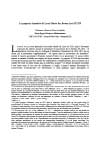
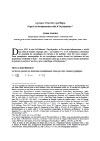
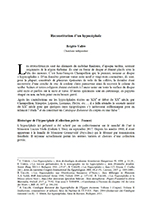
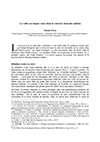
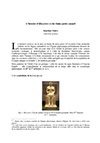
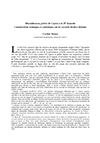





















 Contact
Contact
 Abonnez-vous !
Abonnez-vous ! Équipe Égypte Nilotique et Méditerranéenne
Équipe Égypte Nilotique et Méditerranéenne UMR 5140 « Archéologie des Sociétés Méditerranéennes » (Cnrs)
UMR 5140 « Archéologie des Sociétés Méditerranéennes » (Cnrs) Université Paul Valéry - Montpellier III
Université Paul Valéry - Montpellier III